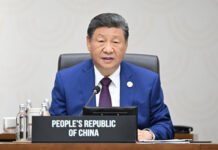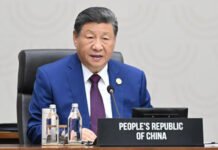INVC NEWS Bengaluru : In a groundbreaking shift that could significantly alter the global tech manufacturing landscape, Apple has unveiled its bold strategy to pivot production from China to India in response to the ongoing U.S.-China trade war. This strategic move, aimed at sidestepping rising tariffs and political tensions, signals a massive reorientation of one of the world’s most influential tech giants and the broader tech manufacturing ecosystem.
Apple’s Shift: A Masterstroke Amid Trade Tensions
As the U.S. and China engage in a fierce trade war, Apple has made a decisive move that could alter the trajectory of the tech giant’s operations in Asia. The company has announced plans to move its iPhone production for the U.S. market to India by 2025. This landmark decision marks a turning point in Apple’s strategy to mitigate risks associated with the escalating trade tensions between the two superpowers.
While Apple has long relied on China as its primary manufacturing hub for iPhones, the rising import tariffs and trade uncertainties have made Chinese production increasingly costly. To combat this, Apple has shifted gears, accelerating production in India, where labor costs are lower, and the manufacturing environment is becoming increasingly competitive. This decision not only shields Apple from volatile political landscapes but also creates a new growth opportunity for India in the global supply chain.
India’s Rise: Why Apple’s Move is a Game-Changer for Tech Manufacturing
India is fast emerging as the go-to hub for global tech manufacturing. Apple’s decision to ramp up its iPhone production in India underscores this shift. With the goal of producing all iPhones sold in the U.S. locally by next year, Apple is investing heavily in India’s manufacturing infrastructure. Apple’s key manufacturing partner, Foxconn, has already ramped up production capacity at its Bengaluru plant, with plans to manufacture 20 million iPhones annually by the end of this year.
This is just the beginning. According to insiders, if Apple’s new strategy proves successful, India’s iPhone production could soar to 60 million units annually by 2026, nearly double the current production. Apple’s move signals the growing importance of India not just as a market for tech products, but as a manufacturing powerhouse in the global tech sector.
Apple’s Strategic Shift: Balancing Profit Margins with Geopolitical Risks
Apple’s decision is a clear response to the rising tariffs and the uncertainty brought about by the trade war. The U.S. remains Apple’s largest market, contributing nearly 28% of global sales. By shifting iPhone production to India, Apple is positioning itself to maximize its profit margins while ensuring its products remain competitively priced in the U.S. market.
In addition to cost reduction, the Indian government’s efforts to enhance its manufacturing sector, including tax incentives and favorable policies, make it an attractive destination for global companies like Apple. For Apple, this move could offer long-term stability, securing its supply chain against future trade disruptions while ensuring a steady flow of production that meets the demands of the U.S. market.
The Geopolitical Implications: China’s Loss, India’s Gain
Apple’s strategic pivot away from China is a significant blow to the country’s status as a global manufacturing leader. China has long been the manufacturing epicenter for tech giants like Apple, but with the ongoing trade tensions, its dominance in the global supply chain is under threat. Apple’s decision to reduce its reliance on Chinese production is a clear indicator that global corporations are seeking to diversify their manufacturing bases amid geopolitical risks.
This shift to India is not just about Apple; it represents a larger shift in the global manufacturing order. As Apple bolsters its production in India, it is likely that other tech giants will follow suit, seeking alternatives to Chinese manufacturing. India’s strategic position in the Asia-Pacific region makes it an increasingly viable alternative for companies looking to mitigate risks and reduce dependency on China.
Impact on India: From Outsourcing Hub to Global Manufacturing Powerhouse
For India, Apple’s move is a watershed moment in its evolution as a manufacturing powerhouse. The country has long been a service-centric economy, but with Apple’s increased investment and the expansion of Foxconn’s production capacity, India is poised to become a critical player in the global tech supply chain. Beyond the economic boost, India’s growing role in tech manufacturing could enhance its geopolitical influence, especially as it strengthens ties with the U.S. and other Western nations.
Moreover, Apple’s commitment to India will likely lead to the creation of thousands of jobs, strengthening India’s position in the global technology sector. India’s manufacturing capabilities, combined with its large, skilled workforce, make it an attractive destination for tech companies looking to future-proof their operations and tap into the rapidly growing Indian consumer market.
What This Means for the Global Supply Chain
Apple’s shift to India is a microcosm of a broader trend in the global supply chain: companies are increasingly diversifying their manufacturing to reduce risks and stay competitive. While China has been the dominant player for decades, the ongoing U.S.-China trade war and rising tariffs are pushing companies to rethink their supply chain strategies. As Apple moves away from China, it sets a precedent for other companies, particularly in the tech sector, to explore alternative manufacturing hubs.
For China, this is a wake-up call. Apple’s exit from China signals the potential erosion of its position as a global manufacturing powerhouse. This could have far-reaching consequences for the Chinese economy, as it risks losing its competitive edge in the tech manufacturing sector. Apple’s decision will likely prompt China to rethink its approach to international trade and foreign investment as the global landscape continues to shift.














